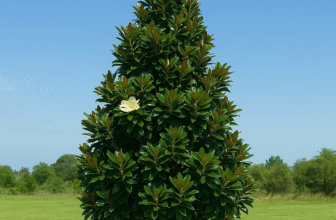The Cousin It plant (Casuarina glauca’ Cousin It’) is an oddball favourite in many Australian gardens. Its cascading green strands look carefree, but like most plants, it has its moments. If yours is looking a little sad—browning, thinning, or just not thriving—this guide’s for you.
As someone who’s worked with this plant from Brisbane’s humid suburbs to the dry hills around Adelaide, I’ve picked up a few tricks and lessons. Here’s what you need to know.
Quick Glance: Cousin It Essentials
FeatureDetails
Botanical Name: Casuarina glauca’ Cousin It’
Plant Type: Sprawling groundcover
Aussie Native? Yes
Sun Needs: Full sun to light shade
Soil Type: Sandy or loamy, well-drained
Water Needs: Low once settled
Best Regions: NSW, QLD, SA, VIC, WA
Common Uses: Slopes, rockeries, retaining walls, pots
Native Credentials: According to the Royal Botanic Gardens Sydney, Casuarina glauca is naturally found along the east coast of Australia, often in sandy or loamy soils near waterways. ‘Cousin It’ is a dwarf cultivar bred for ornamental use.
1. Why Is My Cousin It Turning Brown or Patchy?
Seeing brown or crispy patches? It’s often a water or drainage issue.
Common Causes:
- Heavy, soggy soil
- Not enough water during heat waves
- Roots sitting wet for too long
- Salt exposure (coastal zones)
What Works:
- Improve soil drainage using compost or coarse sand.
- Water deeply but less often—aim for the roots.
- Raise planting beds to keep roots above soggy ground.
- Trim dead bits to encourage new growth.
“In a coastal Sydney yard, I lifted a sad Cousin It into a raised bed. Two weeks later, it was pushing out new green tips.”
2. Not Spreading or Growing?
If your plant seems frozen in time, it might be light-starved or stuck in poor soil.
Could Be:
- Not enough sunlight
- Poor soil nutrition
- Roots too crowded
Try This:
- Relocate to a sunnier spot (6+ hours of sun).
- Loosen compacted soil before planting.
- Feed with a gentle native fertiliser.
“Early spring feeding always kicks things off. But I’ve learned to go light—this plant hates overfeeding.”
3. Pesky Pests
Though not a magnet for bugs, Cousin It isn’t immune.
Pest Signs Treatment
Mealybugs, Cottony white fuzz, Neem oil, or eco soap
Aphids, Sticky leaves. Hose down or spray
Scale, Small brown bumps. Prune and apply white oil
Tip: A weekly spray of plain water deters most pests before they settle.
Is Cousin It Safe for Pets?
Yes—according to the South Australian PIRSA Swamp Oak Policy, the Cousin It cultivar poses no toxicity risk to pets. Just protect it from digging paws.
4. Yellowing or Droopy Growth
It doesn’t have typical leaves, but yellow tones or drooping can signal stress.
Watch for:
- Too much or too little water
- Sudden cold snaps or hot blasts
- Stress after being moved
Solutions:
- Check soil moisture with your finger.
- Mulch with sugarcane or bark.
- Let it settle if you recently moved.
“Melbourne’s unpredictable weather did a number on mine until I mulched and shaded the roots.”
5. Fungal Problems and Root Rot
Soft stems or a foul smell? Root rot is likely.
Red Flags:
- Brown base
- Smells like rot
- Collapsing stems
What Helps:
- Improve drainage ASAP
- Only water in the morning
- Use copper-based fungicide if caught early
“If it smells bad, don’t wait—dig it out and start over with fresh soil.”
Expert Note: I once revived a struggling Cousin It in a coastal Sydney garden simply by lifting it into a rock-edged mound. Within weeks, it bounced back. This aligns with advice from ABARES, which notes that Casuarina glauca thrives in well-drained soils and can tolerate salty winds.
6. Not Thriving in Pots?
Yes, you can grow it in containers—if done right.
Common Pitfalls:
- Cramped roots
- Soil holding too much moisture
Fix It:
- Choose a shallow, wide pot.
- Use a sandy native mix with perlite
- Elevate pots slightly to help airflow
“Mine pairs beautifully with succulents on a patio—less watering, more wow.”
7. Dying After Rain?
A downpour can drown this plant, especially in clay soil.
Why It Happens:
- Water pools around the crown
- Soil stays soaked for too long
Rescue Tips:
- Replant into a sloped or raised area
- Mix in coarse sand
- Pause watering during wet weeks
“During the 2022 La Niña, mine almost rotted. Moving it to a sloped rock bed saved it.”
8. Is It Pet Safe?
Yes—Cousin It isn’t toxic to pets. Just watch for digging!
Handy Table: Quick Fixes
Issue Fast Action
Browning ends Prune and improve the soil
No growth. Move to the sun, feed lightly
Yellowing: Adjust watering, mulch
Pests: Neem oil or hose off
Rot after rain. Lift or replant in a well-drained spot
Industry Insight: U.S. Forest Service research confirms Casuarina glauca tolerates short-term waterlogging but suffers if the roots remain saturated.
Extra Tips for Aussie Gardeners
- Best Planting Time: Autumn or early spring
- Avoid Overfeeding: Native plants prefer low-fuss care
- Great in Groups: Use it between pavers, under shrubs, or trailing over walls
- Prune Lightly: Keeps it tidy without stressing the plant
Good to know!
Most Asked FAQs (Australia 2025 Edition)
How fast does it grow?
With good light and drainage, up to 1m spread in a year.
Can it take full shade?
No, it needs at least some sun or it will stall.
Best soil type?
Free-draining and light—sandy or loamy works best.
Final Thought
Cousin It takes a little getting used to. But once you know its quirks, it’s one of the most rewarding groundcovers around.
It’s low-maintenance, waterwise, and a real talking point. Whether you’re using it on a slope, in a pot, or to soften hardscape edges, it adds movement and texture like few others.
Just don’t drown it—and you’re good to go.





